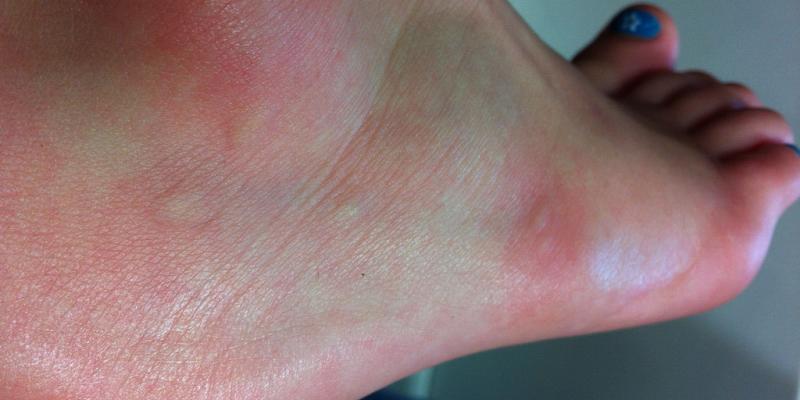How to get rid of those unwanted ants
A solitary ant scurrying across a kitchen counter is easy to squish. So is a small trail of ants.
But these little guys are scouts for hundreds, if not thousands of their nest mates who are waiting in lawns, walls, roofs, under floors and foundations to follow invisible scent trails inside. When the whole gang arrives they become more than a damp dish cloth and some aggressive wiping can handle.
In colder parts of the country ants go into a short hibernation. However, nests in or nearby houses may stay warm enough for foraging to continue throughout the winter months.
Ants make themselves at home anywhere they have access to adequate shelter and sustenance. The first step to remedying a home invasion is to make sure food residue and spills are attended to. Clean the kitchen, clean it well. Pay particular attention to your floor too, and make sure there aren’t any crumbs and scraps hiding in corners.
My flatmate’s fondness of leaving leftover pizza on the bench meant that for at least a month, we had a hell of a time getting rid of them.

Ant Bites: Everything There Is To Know, And Beyond
Ants are one of those insects who are habitual to living within a colony. They are generally peace-loving creatures who will not prefer to harm or disturb you unless they feel threatened by you. This is generally the case with every animal or insect out there in nature
When ants feel threatened, they usually let out a bite or sting which feels different than those of the other insects, in particular. Having said that, these bites can be quite dangerous and even toxic in case of ants of certain specific species. For example, red ant stings may not be too big an issue to deal with, but fire ant stings will definitely have you writhing in pain and agony
Overview of Ant Bites
As mentioned before, any bites may occur because the ant colony is feeling dominated or bullied by you, which will happen if you stumble upon their settlements unannounced. This is why it is important to take extra precautions while venturing out amidst nature.
What Is An Ant Bite or Ant Sting?
Ants don’t literally ‘bite’ you. They just let out a small drop of acidic venom off their mouths on to your skin which causes you to feel that blistering pain like a burn. This burning sensation lasts for a while or even longer depending on the type of ant you have been stung by.
Red Ant Stings:
As mentioned before, ants bite you only when you disturb them, or they feel threatened by your presence. Red ant stings do burn but only for a short while. They may leave a small swelling on the site of the bite, but nothing more than that.

Ant
Ants are eusocial insects of the family Formicidae and, along with the related wasps and bees, belong to the order Hymenoptera. Ants appear in the fossil record across the globe in considerable diversity during the latest Early Cretaceous and early Late Cretaceous, suggesting an earlier origin. Ants evolved from vespoid wasp ancestors in the Cretaceous period, and diversified after the rise of flowering plants. More than 12,500 of an estimated total of 22,000 species have been classified. They are easily identified by their elbowed antennae and the distinctive node-like structure that forms their slender waists.
Ants form colonies that range in size from a few dozen predatory individuals living in small natural cavities to highly organised colonies that may occupy large territories and consist of millions of individuals. Larger colonies consist of various castes of sterile, wingless females, most of which are workers (ergates), as well as soldiers (dinergates) and other specialised groups. Nearly all ant colonies also have some fertile males called “drones” (aner) and one or more fertile females called “queens” (gynes). The colonies are described as superorganisms because the ants appear to operate as a unified entity, collectively working together to support the colony.
Ants have colonised almost every landmass on Earth. The only places lacking indigenous ants are Antarctica and a few remote or inhospitable islands. Ants thrive in most ecosystems and may form 15–25% of the terrestrial animal biomass. Their success in so many environments has been attributed to their social organisation and their ability to modify habitats, tap resources, and defend themselves. Their long co-evolution with other species has led to mimetic, commensal, parasitic, and mutualistic relationships.
Ant societies have division of labour, communication between individuals, and an ability to solve complex problems. These parallels with human societies have long been an inspiration and subject of study. Many human cultures make use of ants in cuisine, medication, and rituals. Some species are valued in their role as biological pest control agents. Their ability to exploit resources may bring ants into conflict with humans, however, as they can damage crops and invade buildings. Some species, such as the red imported fire ant (Solenopsis invicta), are regarded as invasive species, establishing themselves in areas where they have been introduced accidentally.
Collective intelligence: Ants and brain’s neurons
An individual ant is not very bright, but ants in a colony, operating as a collective, do remarkable things. A single neuron in the human brain can respond only to what the neurons connected to it are doing, but all of them together can be
“I’m interested in the kind of system where simple units together do behave in complicated ways,” she said. No one gives orders in an ant colony, yet each ant decides what to do next.
For instance, an ant may have several job descriptions. When the colony discovers a new source of food, an ant doing housekeeping duty may suddenly become a forager. Or if the colony’s territory size expands or contracts, patroller ants change the shape of their reconnaissance pattern to conform to the new realities. Since no one is in charge of an ant colony – including the misnamed “queen,” which is simply a breeder – how does each ant decide what to do?
This kind of undirected behavior is not unique to ants, Gordon said. How do birds flying in a flock know when to make a collective right turn? All anchovies and other schooling fish seem to turn in unison, yet no one fish is the leader.
All I need in life is this group where everyone pretends to be ants
“I am tired of bringing food to the Queen to justify my existence,” a poster writes. “When does it end? When can I have some of the food I bring home? When will I see the value of my labor?”
But there’s something special about the ant colony group. Yes, jokes and memes are exchanged. But there’s a unique earnestness to the interactions; it feels like a world. A user confesses that he’s in love with the Queen, and 120 commenters urge him to set aside his dalliance, remember his purpose, and get back to work. A member announces that a larva is missing; commenters split into search parties, some volunteer information, others ask for updates, and the larva is eventually found. It’s silly, but I’ll admit: I breathed a sigh of relief.
I don’t need to tell you that we’re living in stressful times, and while we’re all experiencing them together, their impacts on us, and the particular patchwork of ways they’ve upended each of our lives — our workplaces, our families, our own health — are unique to each of us. We’re experiencing a shared crisis alone.
Different things help different people stay sane. For me, the ant colony group is a reminder of the bigger things — bigger worlds, longer times — that surround the tragic and terrifying microcosm we’re currently in. I think about the ant hills on my lawn. I think of an ant, feet under the ground, standing before a crowd of fellow insects, somberly announcing “Death water came from the sky today. Many good workers lost. Press F.” I think of another ant, huddled with a group off to the side, asking in a hushed voice, “Alright, what’s our stance on allying with the red ants? Yea or nay?”
I know that’s not what’s happening, obviously. But in whatever non-English medium ants and anteaters and termites and fruit flies and everything else use to communicate, there are things going on out there. Things are happening, constantly, that are far beyond my understanding. The ants are marching on. It’s probably silly that that helps me get through each day, but it does all the same.